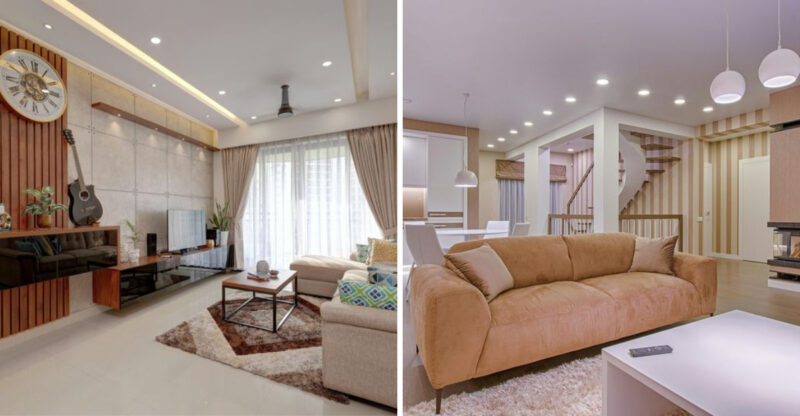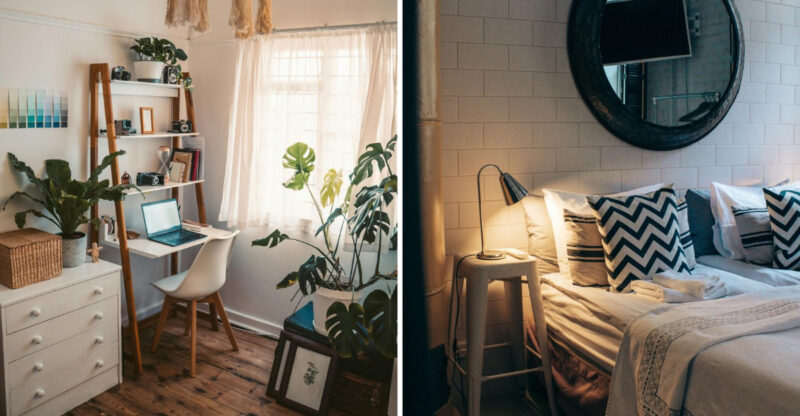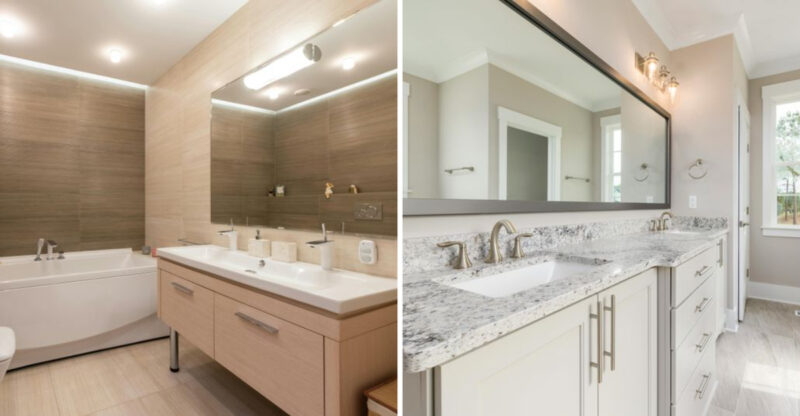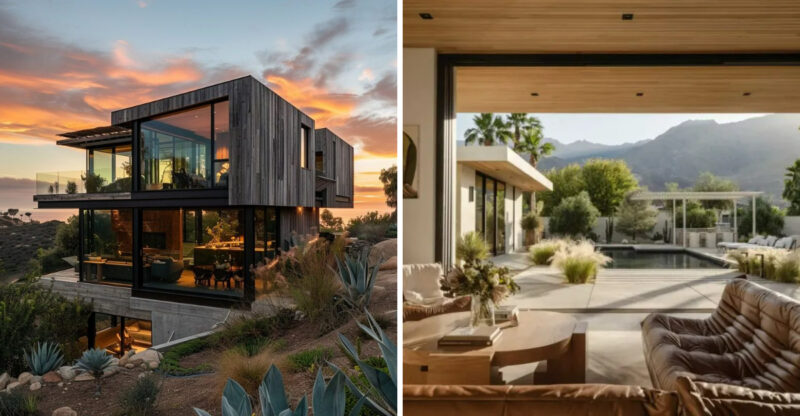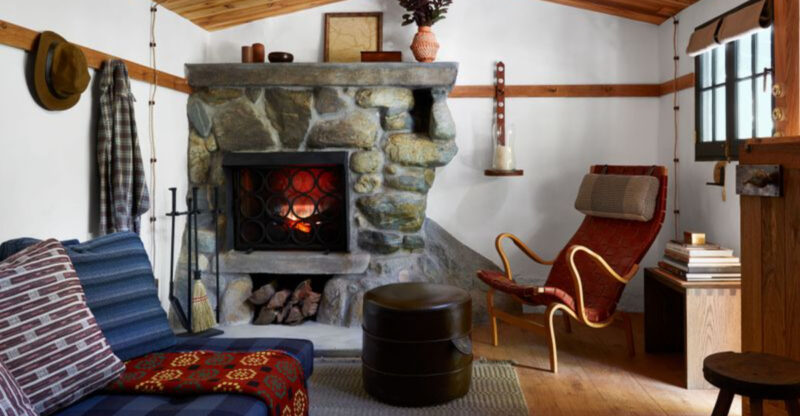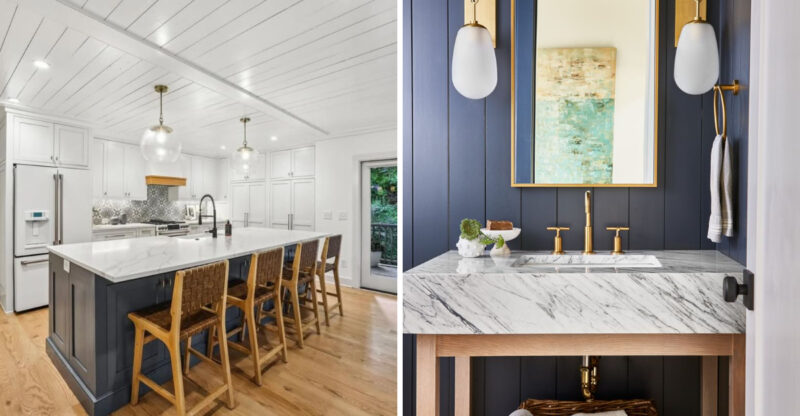New Mexico Homes With Kitchens That Could Capture Adobe Charm
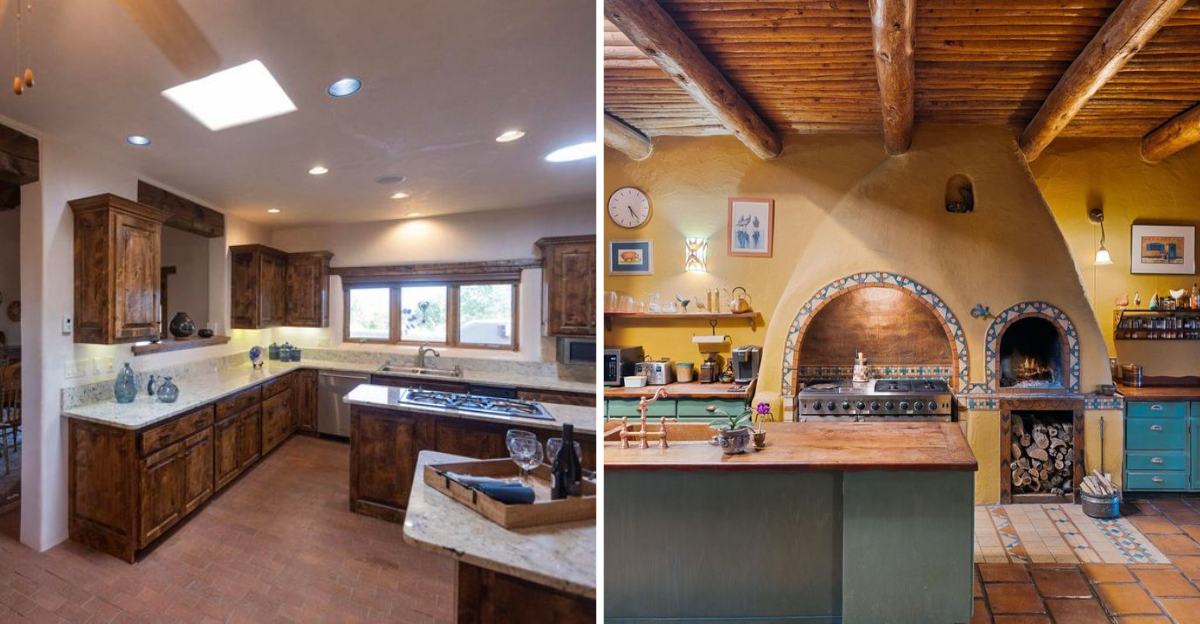
New Mexico’s architecture tells a story as rich as its landscape, with adobe homes standing as living monuments to the state’s cultural heritage.
The heart of these homes the kitchen offers a unique canvas for blending traditional charm with modern convenience. From Santa Fe to Alamogordo, these kitchens showcase how earthy tones, natural materials, and thoughtful design can create spaces that feel both timeless and welcoming.
1. Santa Fe Pueblo Kitchen – New Mexico
Nestled in the historic district, Santa Fe Pueblo kitchens embrace curved corners and thick walls that keep the space naturally cool. I love how the exposed vigas (wooden ceiling beams) create dramatic shadows across the buttery walls while adding authentic structural elements.
Handmade tile work in turquoise and terracotta brings the countertops to life, often featuring traditional patterns that tell stories of the region’s heritage. Local artisans craft these details with techniques passed down through generations.
If you’re renovating, consider incorporating a kiva-style corner fireplace they’re not just decorative but practical for those chilly desert nights when the family gathers for meals. Wood-burning ovens built into adobe walls make bread-baking a delicious tradition worth continuing.
2. Albuquerque Adobe Kitchen – New Mexico
Heart of the home takes on new meaning in Albuquerque adobe kitchens where families gather around massive wooden islands topped with hand-polished concrete. The earthy palette of sunset oranges and sky blues reflects the stunning New Mexico landscapes visible through deep-set windows.
Handcrafted tin light fixtures hang from the ceiling, casting intricate patterns across textured walls that have been hand-plastered with natural earth pigments. When the evening light hits just right, the whole room glows like a sunset.
Many homeowners incorporate reclaimed wooden doors from historic buildings, adding character while honoring local architectural history. These kitchens aren’t just cooking spaces they’re gathering places where the boundary between indoor and outdoor living blurs through thoughtful design elements like corner banco seating and courtyard access.
3. Taos Historic Kitchen – New Mexico
Walking into a Taos historic kitchen feels like stepping back in time while enjoying modern conveniences. The walls, often more than a foot thick, create deep windowsills perfect for growing herbs or displaying pottery collections from nearby pueblos.
Wooden corbels support rough-hewn shelving where colorful dishes stand ready for family gatherings. Did you know these distinctive carved brackets aren’t just decorative? They’re architectural elements that have supported adobe structures for centuries.
Low ceilings with exposed latillas (small wooden poles) create an intimate atmosphere that encourages lingering conversations over morning coffee or evening wine. Most impressive are the original wood-burning hornos (outdoor ovens) that some homeowners have maintained or restored, allowing for authentic bread-baking experiences that connect modern families to centuries-old traditions.
4. Las Cruces Southwestern Kitchen – New Mexico
Bright splashes of yellow, red, and blue transform Las Cruces kitchens into vibrant spaces that celebrate the region’s Mexican influences. I’ve noticed how homeowners here aren’t afraid to play with color, painting accent walls in rich shades that complement the natural adobe.
Handpainted Talavera tiles create stunning backsplashes that serve as functional art pieces, often depicting local wildlife or desert plants. The contrast between these colorful elements and the earthy adobe walls creates a balanced space that feels both lively and grounded.
Where modern meets traditional, you’ll find contemporary appliances cleverly tucked into adobe niches or behind custom wooden panels that maintain the southwestern aesthetic. Open shelving displays collections of tinwork, pottery, and woven baskets practical items that double as decorative elements connecting daily life to cultural heritage.
5. Roswell Rustic Kitchen – New Mexico
Though Roswell might be famous for aliens, its kitchens offer down-to-earth charm with rustic wooden beams that contrast beautifully against smooth adobe surfaces. The interplay of textures rough and smooth, hard and soft creates visual interest that draws you into the space.
Kiva-style fireplaces aren’t just for living rooms here; many Roswell kitchens feature smaller versions perfect for warming the heart of the home during winter mornings. These architectural elements serve practical purposes while connecting to Indigenous building traditions.
Leather cabinet pulls and iron hardware add rustic touches that age beautifully over time. What makes these kitchens truly special is how they blend practicality with beauty cooking spaces designed for real family use while honoring traditional materials and techniques that have stood the test of time in New Mexico’s unique climate.
6. Farmington Adobe-Style Kitchen – New Mexico
Morning light filters through small, strategically placed windows in Farmington kitchens, creating pools of sunshine that warm the cool adobe surfaces. These thoughtfully designed spaces often feature built-in banco seating adobe benches covered with colorful cushions that invite family members to linger while meals are prepared.
Wooden countertops show the marks of family gatherings and holiday preparations, telling stories of generations cooking together. The patina that develops over years of use adds character that can’t be manufactured or rushed.
Handwoven Navajo rugs bring warmth to saltillo tile floors, reflecting the region’s Native American influences. What makes these kitchens remarkable is their adaptability spaces that have evolved over decades or even centuries to meet changing needs while maintaining their essential character and connection to the land.
7. Rio Rancho Traditional Kitchen – New Mexico
Desert meets domesticity in Rio Rancho kitchens where modern families honor traditional elements while creating functional spaces. Curved archways between cooking and dining areas echo the organic forms found in traditional adobe architecture, creating a natural flow between spaces.
Niches carved directly into thick walls display treasured pottery or santos (hand-carved religious figures), adding personal meaning to architectural elements. These built-in display areas eliminate the need for additional furniture while showcasing important cultural items.
Wooden ceiling treatments featuring herringbone-patterned latillas create visual interest overhead, drawing the eye upward and making even modest-sized kitchens feel spacious. The beauty of these Rio Rancho kitchens lies in their honest approach to materials nothing is faux or pretending to be something it’s not, creating spaces with integrity and authenticity that contemporary homeowners crave.
8. Española Clay Kitchen – New Mexico
Clay isn’t just in the walls of Española kitchens it’s in their soul. These spaces celebrate earth elements through hand-troweled plaster finishes that reveal the craftsperson’s touch, with subtle variations in texture that catch light differently throughout the day.
Corner fireplaces with banco seating create cozy breakfast nooks where family stories are shared over morning coffee. The rounded edges of these adobe features feel protective and nurturing, like a warm embrace on cool desert mornings.
Handmade copper sinks develop rich patinas that deepen with each use, becoming more beautiful with age. What I find most inspiring about these kitchens is their timelessness they don’t follow trends but instead honor regional building techniques that have proven their worth over centuries, creating spaces that feel both ancient and perfectly suited to contemporary life.
9. Gallup Pueblo Kitchen – New Mexico
Influenced by nearby Native American communities, Gallup kitchens blend cultural elements in respectful ways that honor the region’s diverse heritage. The color palette draws from the surrounding landscape deep reds of canyon walls, turquoise like high desert skies, and warm yellows reminiscent of sunset on sandstone.
Handcrafted tile work often features geometric patterns inspired by traditional Navajo textiles, creating visual connections to the artistic traditions that thrive in this region. These aren’t just decorative choices but meaningful references that root the space in place.
Wooden vigas extend from interior ceilings to exterior spaces, visually connecting indoor cooking areas with outdoor dining patios. This architectural feature reminds us that in New Mexico’s moderate climate, kitchens naturally extend beyond four walls, embracing outdoor cooking and dining as essential aspects of home life that connect families to the land and sky.
10. Carlsbad Desert Kitchen – New Mexico
Desert living inspires practical beauty in Carlsbad kitchens where thick adobe walls naturally regulate temperature, keeping spaces cool despite the intense heat outside. These energy-efficient homes showcase how traditional building methods offer climate solutions more effective than many modern approaches.
Local limestone countertops reference the nearby caverns that made Carlsbad famous, bringing elements of the surrounding landscape indoors. Many homeowners incorporate subtle fossil patterns or natural veining that tells geological stories of the region.
Clerestory windows allow natural light while minimizing heat gain, creating beautiful light patterns that move across textured walls throughout the day. The genius of these kitchens lies in their responsiveness to local conditions—spaces designed with an intimate understanding of place rather than following national design trends that often ignore regional climate considerations.
11. Los Alamos Adobe Kitchen – New Mexico
Science meets tradition in Los Alamos kitchens where technically-minded homeowners often incorporate sustainable innovations while honoring adobe aesthetics. Passive solar design principles inform window placement, creating kitchens that harvest winter sunshine while blocking summer heat smart design that predates modern energy concerns.
Built-in adobe shelving creates organic storage solutions that eliminate the need for some cabinetry, allowing handmade pottery and local art to become part of the architectural experience. These curved niches soften the kitchen’s lines, creating visual rhythm throughout the space.
Mesquite wood makes frequent appearances in countertops and islands, its dense grain proving remarkably durable while connecting to regional materials. The thoughtfulness behind these kitchens reflects the community’s scientific mindset spaces designed with intention where every element serves both practical and aesthetic purposes, proving that beautiful design and functionality need never be separated.
12. Alamogordo Southwestern Kitchen – New Mexico
White gypsum influences the lighter adobe palette of Alamogordo kitchens, reflecting the nearby White Sands National Park through soft, luminous wall finishes. These spaces feel airy and bright while maintaining the substantial, grounded feeling that makes adobe homes so distinctive.
Handcrafted tin light fixtures cast intricate shadow patterns across walls and ceilings, creating ever-changing artwork through simple play of light and shadow. These metal works often incorporate cutout designs of regional significance coyotes, roadrunners, or mountain silhouettes.
Brick or tile floors laid in traditional patterns provide practical surfaces that stay cool in summer heat while adding visual texture underfoot. The magic of these kitchens comes from their honest simplicity spaces free from unnecessary ornamentation where natural materials, thoughtful craftsmanship, and connections to the surrounding landscape create rooms with soul and substance rarely found in contemporary construction.

